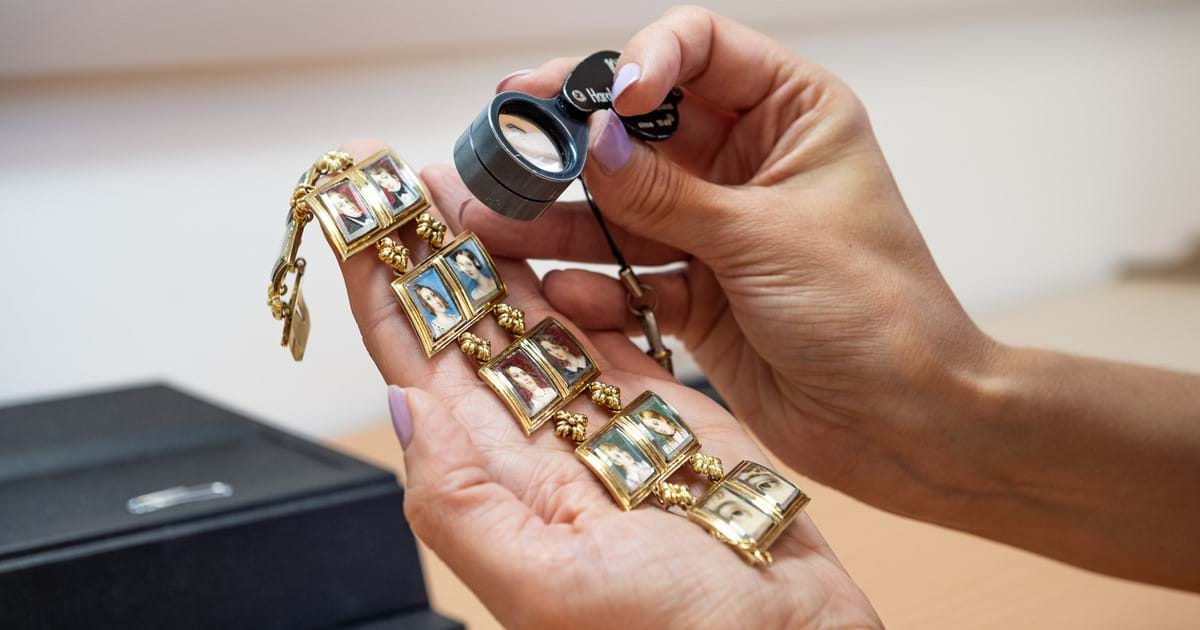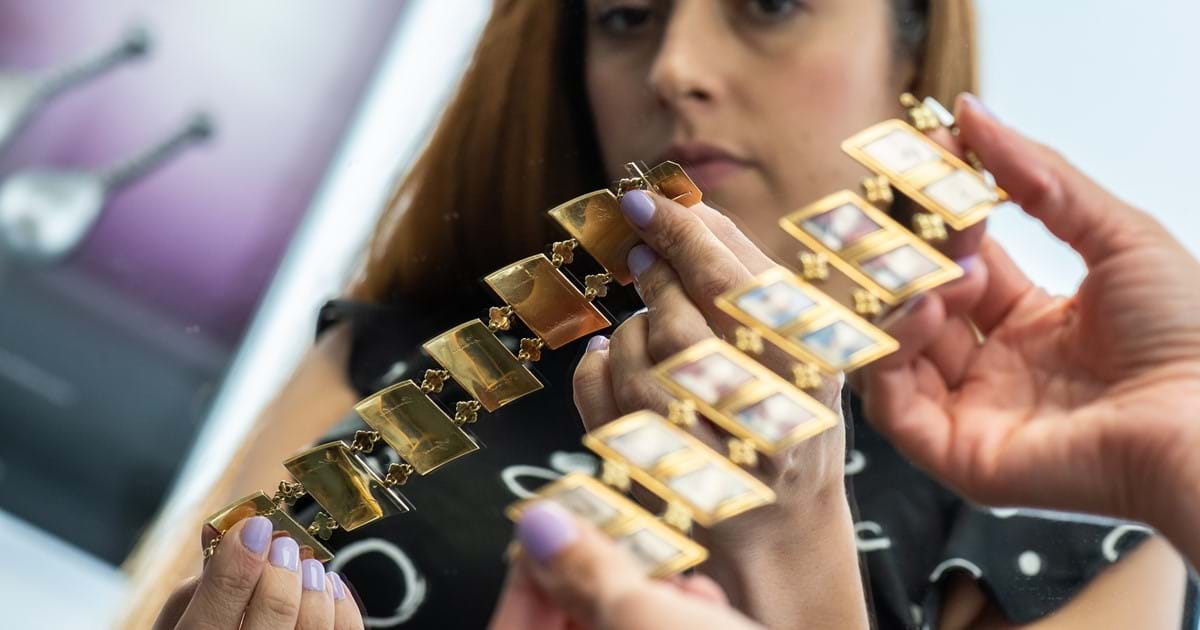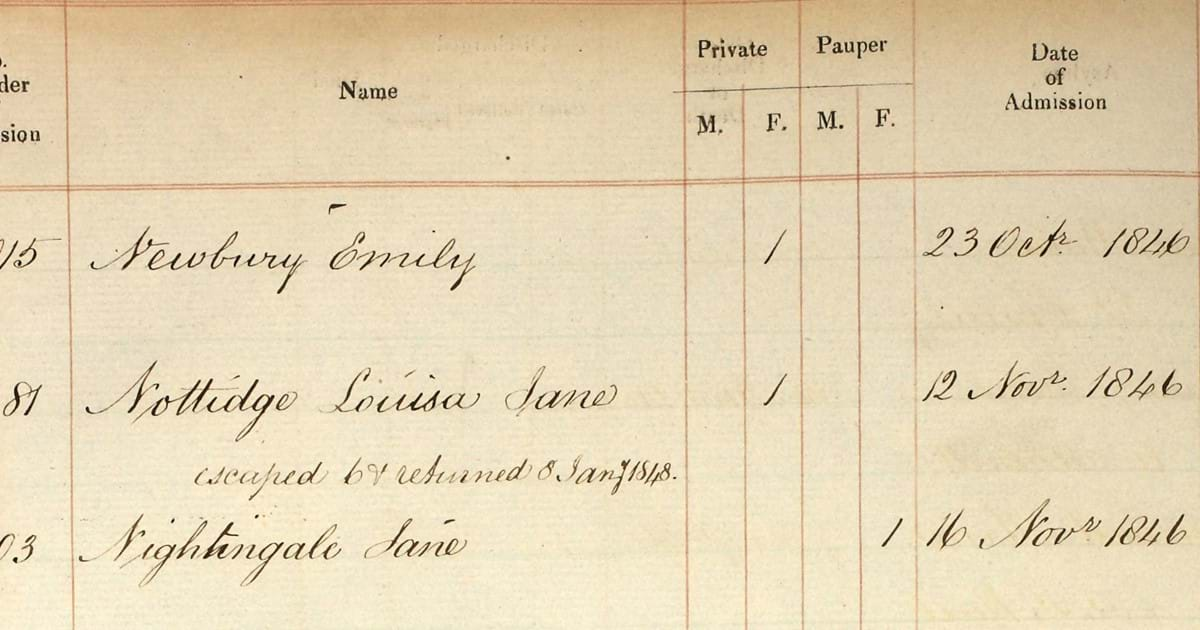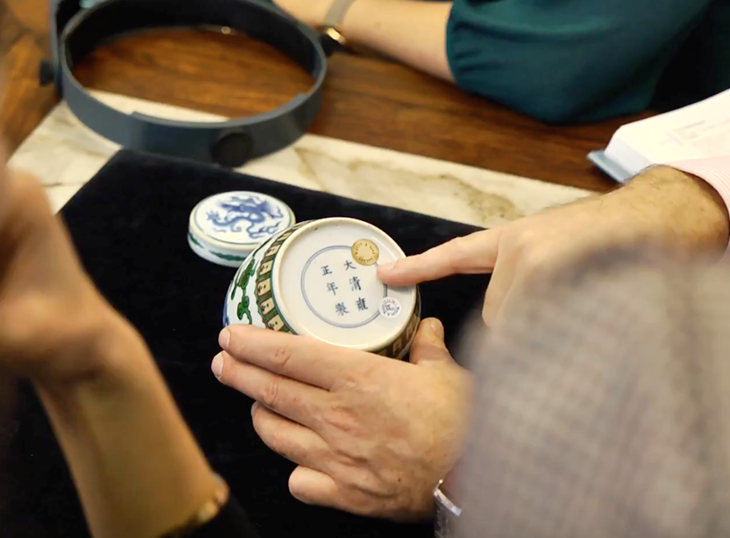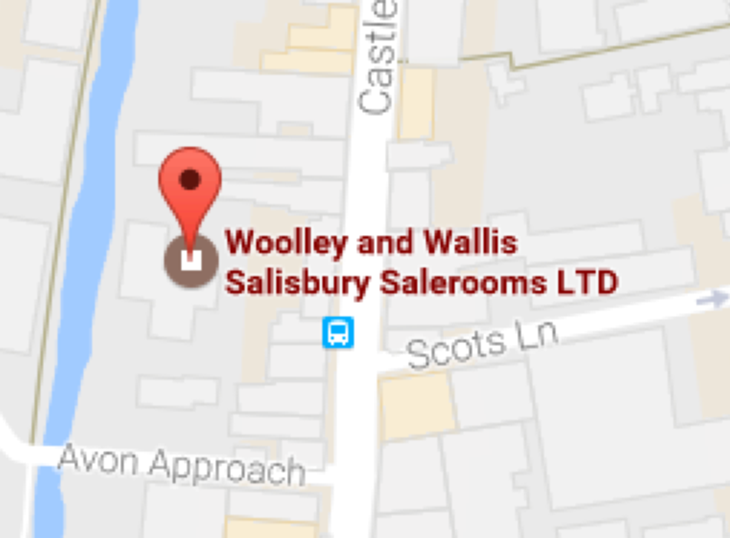A Very Victorian Scandal
22nd October 2019Not long after Queen Victoria came to the throne, a mother was presented with the gift of a bracelet that was beautifully painted with miniature portraits of her 11 surviving children. A decade later that same mother was responsible for incarcerating one of her daughters in a lunatic asylum – an incarceration that scandalised early Victorian society, led to two massive lawsuits and inspired the Wilkie Collins novel The Woman in White.
The fascinating story behind the Nottidge family came to light when a 19th century bracelet of portrait miniatures was consigned for auction at Woolley and Wallis. Consisting of eight portrait miniatures and four unusual eye miniatures, the bracelet was inscribed on the back with a series of names, including that of Josias Nottidge – the children’s father and presumably the giver of the bracelet to his esteemed wife, Emily. Research into the people behind the portraits soon revealed a family torn apart by scandal.
The Nottidge children grew up in Wixoe, Suffolk during the late 18th and early 19th century; their parents were wealthy wool clothiers who worked fulling mills in Essex and Suffolk. The children recalled a heavy emphasis on religious education during their upbringing, with most of their reading centred around religious texts. It inspired a religious fervour among some of the children, which left them vulnerable when a new style of preacher, notorious for behaving as though he had been possessed during his sermons, came calling.
In 1843 the Reverend Henry Prince preached at a church in Stoke, near Wixoe, and got to know the family – ingratiating himself with the five unmarried daughters. On the death of their father, Josias, in 1844 the women each inherited the sum of £6,000, which Prince persuaded them to invest in the founding of a new religious community in Somerset known as the Agapemone (or Abode of Love). Prince preyed on wealthy unmarried women, such as the Nottidge sisters, and took several “spiritual” wives from his congregation. Having persuaded three of the sisters to travel to Somerset with him, they were then married to three of his closest disciples in a joint ceremony in Swansea in 1845. Despite warnings from one of her younger sisters who was beginning to recognise that all was not as it seemed in her new life, Louisa Nottidge (still a spinster at the age of 44) travelled to Somerset to join the community late in 1846.
Emily Nottidge, concerned with the spiritual and financial influence that the Reverend Prince held over her four daughters, enlisted the help of her eldest surviving son, Edmund, her nephew and her son-in-law to travel to Somerset and rescue Louisa. This “rescue” resulted in the kidnap and imprisonment of unfortunate Louisa in 12 Woburn Place, London. Her refusal to turn from the Agapemone resulted in her mother having her declared insane and incarcerated in the Moorcroft House Asylum in Hillingdon. Here she stayed for over a year until, in January 1848, she managed to escape, travelling across London to meet the Reverend William Cobbe (one of her brothers-in-law), but was recaptured at Paddington Station just two days later and returned to the asylum. Cobbe intervened on Louisa’s behalf, alerting the Commissioners in Lunacy, whose report resulted in her eventual release four months later. Louisa then sued her captors (her brother, nephew and brother-in-law) for abduction and false imprisonment – a court case which she won. She returned to Somerset and remained with the Agapemone until her death ten years later in 1858 at the age of just 56.
The court case was reported on daily in The Times and drew great national interest, with Charles Dickens reporting on it in 1850. Along with the case of Rosina Doyle Lytton (who was certified insane by her husband after publicly denouncing him) the ill treatment of Louisa Nottidge inspired Wilkie Collins to write his famous novel The Woman in White which was published in 1859, the year after Louisa’s death.
It is hard to believe, when looking at the innocent faces of the children depicted on Emily Nottidge’s bracelet, that within two decades the family would be at the centre of a national scandal that would continue to capture the public’s imagination some 180 years later and inspire a novel that remains at the forefront of classic literature.
Emily Nottidge passed away in 1863 at the age of 90. The fate of her bracelet since that time is uncertain, but the current owner purchased it in London some ten years ago. Now, almost two centuries after it was gifted to Emily, the true story of the Nottidge family has been rediscovered and the bracelet’s real significance revealed. It will be sold at auction in Salisbury on 30th October as part of the Fine Jewellery sale at Woolley and Wallis, where it carries a pre-auction estimate of £8,000-12,000.
UPDATE: The bracelet sold for a premium inclusive £20,000 on 30th October.

